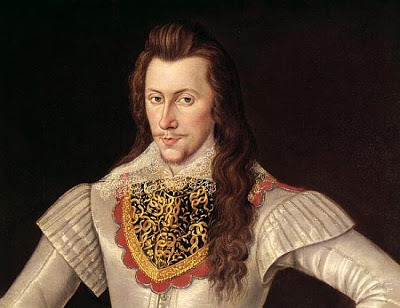Warwick art historian uncovers lost portrait of Henry Wriothesley, Shakespeare’s patron and possible lover
Warwick art historian, Dr Elizabeth Goldring, has discovered a thought-to-be lost portrait of Henry Wriothesley after more than 400 years since its creation.
Henry Wriothesley (1573-1624) was the third Earl of Southampton, and was notably connected to William Shakespeare, with two of the playwright’s famous poems dedicated to him.
The owners of a small private collection contacted Dr Goldring after reading her book Nicholas Hilliard: Life of an Artist, suspecting that a portrait in their collection might be the work of the renowned miniaturist Hilliard and wishing to identify the subject.
It has since been confirmed that the portrait is indeed one of Hillard’s (c.1547-1619) and depicts Wriothesley, the third Earl of Southampton.
“The Earl’s pearl earring, bracelets, beautifully embroidered clothing, and long hair held close to his heart may present an initial impression of a woman, but this is a faithful representation of Wriothesley’s appearance,” explains Dr Goldring.
“A noted patron of the arts, Wriothesley was celebrated by his contemporaries for his androgynous beauty and his love of poetry and drama. He was known, too, for his vanity and for the great pride he took in his appearance, especially his long hair.”
Perhaps more so than his earldom, Wriothesley today can be recognised by his connection to Shakespeare, who dedicated to Wriothesley both his 1593 poem Venus and Adonis and 1594’s The Rape of Lucrece.
Miniatures were inherently private artworks that were frequently exchanged as love tokens
Dr Elizabeth Goldring, University of Warwick art historian
While the dedication to Venus and Adonis is more restrained, the dedication to The Rape of Lucrece reads: “The love I dedicate to your lordship is without end […] What I have done is yours; what I have to do is yours; being part in all I have, devoted yours.”
The adulatory language here is not out of place, but instead in line with the flattery nobles frequently received for sponsoring literary works.
However, it is often speculated that Wriothesley and Shakespeare had a deeper relationship than patron and sponsor, with Wriothesley being referred to as “fair youth” in his sonnets.
The discovery of Hilliard’s portrait only supports this school of thought. Dr Goldring explained: “Miniatures were inherently private artworks that were frequently exchanged as love tokens.”
The miniature was painted over a playing card, a customary tradition. However, the heart on the card had been blacked out and replaced with an arrow, which Dr Goldring believes was “certainly done on purpose”.
“It could, arguably, be a spade – but I think it more strongly resembles a spear, the symbol that appears in Shakespeare’s coat of arms.”

Comments